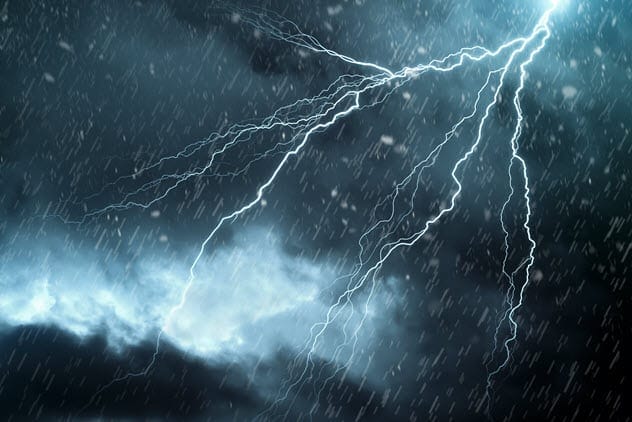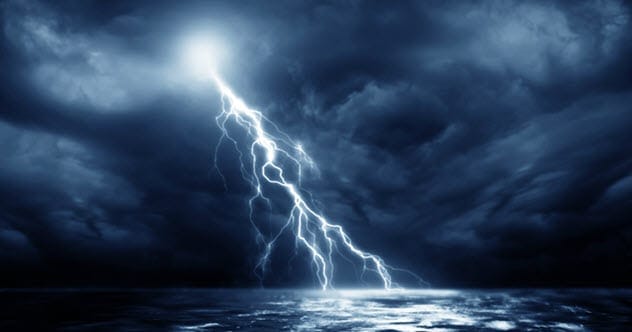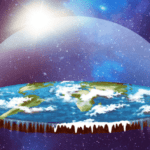Lightning has captivated humanity for ages with its raw power and unpredictable nature. It sparks fires, appears out of nowhere, and has even been attributed to divine origins. Whether you envision Zeus wielding thunderbolts or Thor striking with his hammer, lightning remains a mesmerizing spectacle. Here are 10 electrifying facts about lightning that might just leave you thunderstruck.
Hair-Raising Pictures

Contrary to popular belief, lightning strikes don’t always occur without warning. In 1975, the McQuilken siblings were climbing Moro Rock in California when they noticed their hair standing on end. Amused and unconcerned, they smiled for a photo. Soon after, hail began to fall, but they didn’t descend quickly enough. Lightning struck.
Michael and his brother, Sean, were knocked to the ground. Tragically, a nearby man was killed. While the siblings survived with minor injuries, they understandably developed a healthy respect for thunderstorms. The incident also led to a lawsuit against the U.S. government for inadequate warnings, though it was ultimately dismissed.
Sprites
![]()
Thunderstorms can produce more than just flashes of lightning. High above the storm clouds, large, red flares called sprites can shoot upwards into the atmosphere, reaching altitudes of nearly 97 kilometers (60 miles). These are also known as “upper atmospheric lightning.”
Sprites differ significantly from lightning. While lightning generates intense heat that creates light, sprites produce a cold light, similar to that of a fluorescent tube. The exact science behind sprites is still not fully understood, adding to their enigmatic appeal.
Extraterrestrial Lightning

Lightning isn’t exclusive to Earth. For many years, it’s been known that lightning occurs on other planets with atmospheres. Radio signals from lightning strikes have been detected by probes orbiting Jupiter and Saturn, and there’s evidence suggesting it may also occur on Venus. However, it wasn’t until 2009 that NASA captured the first images of lightning on Saturn.
The Cassini space probe observed a massive storm on Saturn that persisted for months. It detected both the visual flashes and radio emissions characteristic of lightning. Using this data, NASA created a video of the storm, even recreating the potential sounds based on Saturn’s atmosphere.
Beatles’ Revenge

Lightning is often considered an “act of God.” When John Lennon of The Beatles jokingly claimed the band was “more popular than Jesus,” many Christians took offense and protested the group.
In Longview, Texas, radio station KLUE hosted a Beatles bonfire, burning the band’s records. The event drew a crowd and significant publicity. However, the next day, lightning struck the station, taking it off the air and destroying its equipment. The station’s news director, Phil Ransom, who had criticized Lennon’s remarks, was also struck. Karma, perhaps?
Constant Lightning Storm
The Catatumbo Delta in Venezuela features an almost nightly spectacle: a lightning storm that produces up to 280 strikes per hour. This phenomenon occurs around 260 nights each year and is known as the “everlasting storm,” or the “Beacon of Maracaibo,” due to its guiding light.
The exact cause remains a mystery. Theories range from uranium deposits in the surrounding rocks to methane released from bogs. Recent research suggests that local wind patterns play a crucial role in the storm’s formation.
Thundersnow

Thunder and lightning are usually associated with rain, but they can also occur during snowstorms, creating a phenomenon called thundersnow. The muffled sound of thunder due to the snow makes it easy to miss.
Thundersnow is relatively rare, but more common near the Great Lakes in North America. It forms when warm air rises and rubs against freezing air, creating a charge in the falling cold air. This combination sets the stage for lightning to strike amidst a snowy landscape.
Juliane Koepcke

Airplanes are struck by lightning frequently, about once a year on average, according to the FAA. Usually, this goes unnoticed because the plane’s metal skin conducts the electricity safely. However, on Christmas Eve 1971, a plane wasn’t so fortunate.
Juliane Koepcke was flying over the Amazon when her plane entered a thundercloud. After being struck by lightning, the plane crashed, and Juliane fell 3.2 kilometers (2 miles) to the ground, still strapped to her seat. Miraculously, she survived with only a broken collarbone and other injuries. She then had to walk through the jungle for 11 days, surviving on scavenged sweets, until she was rescued.
King Of Kings

At the Solid Rock Church in Ohio, a massive statue of Jesus, nicknamed “Touchdown Jesus” for its raised arms, stood tall. Surely, it seemed immune to any acts of God. However, in 2010, lightning struck the statue.
The statue, officially named King of Kings, was made of fiberglass and plastic over a metal frame. The lightning strike caused it to catch fire and burn. The church rebuilt a new statue called Lux Mundi (“Light of the World”), which locals now call “Hug Me Jesus” because of its welcoming arms.
Ball Lightning
Ball lightning is unlike typical lightning. Reports describe luminous balls of gas moving through the sky and entering homes, often appearing after a regular lightning strike.
Unlike the brief flash of lightning, ball lightning can last for seconds or even minutes and travel great distances. Even inside, you’re not entirely safe—ball lightning has been known to pass through closed windows. Despite a high-speed camera capturing it, science has yet to fully explain this bizarre phenomenon.
Lightning Protection

Benjamin Franklin’s work with electricity made him a sensation in Europe in the 1780s. People, wanting to emulate him, began a fashion trend: portable lightning protection. Parisians attached lightning rods to their hats and umbrellas, just in case lightning might strike.
This desire for protection from lightning persisted. In 1978, a patent application was filed for a Portable Lightning Rod—a long metal pole surrounded by an insulator designed to safely divert lightning to the ground. It even included an attachable umbrella for rainy weather. While it didn’t become a hit, the patent has expired, so feel free to create your own!
From hair-raising encounters to extraterrestrial occurrences, lightning continues to amaze and confound us. These electrifying facts remind us of the power and mystery of nature.
What’s the most shocking thing you’ve learned about lightning? Leave your comment below!










